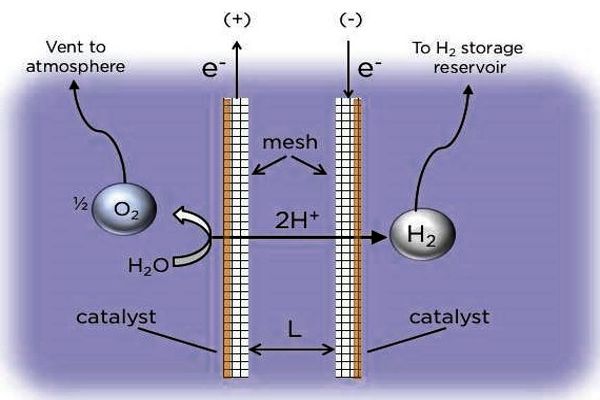The achievement of net-zero carbon dioxide emissions is referred to as carbon neutrality. This can be accomplished by balancing carbon dioxide emissions with removal (often through carbon offsetting) or by eliminating emissions from society (the transition to the “post-carbon economy”). It is applied to carbon dioxide-emitting processes such as transportation, energy production, agriculture, and industry.
McGill University researchers have demonstrated a technique that could allow the production of robust, high-performance membranes for harnessing an abundant source of renewable energy.
Blue energy, also known as osmotic energy, takes advantage of the energy that is naturally released when two solutions of different salinities mix—conditions that occur in countless locations around the world where fresh and salt water meet.
The key to capturing blue energy is the use of selectively permeable membranes, which allow only one constituent of a saltwater solution to pass through—either the water molecules or the dissolved salt ions—but not both.
Researchers at McGill University have demonstrated a technique that could enable the production of robust, high-performance membranes to harness an abundant source of renewable energy.
A problem of scale
Large-scale blue energy projects, such as Norway’s Statkraft power plant, have been hampered to date by the inefficiency of existing membrane technology. Researchers in the lab have created membranes made of exotic nanomaterials that show great promise in terms of the amount of power they can generate relative to their size. However, converting these vanishingly thin materials into components large enough and strong enough to meet the demands of real-world applications remains a challenge.
A team of McGill physicists recently demonstrated a technique that may pave the way to overcoming this challenge in results published in Nano Letters.
“We aimed to remedy the inherent mechanical fragility problem while exploiting the exceptional selectivity of thin 2D nanomaterials in our project by fabricating a hybrid membrane made of hexagonal boron nitride (hBN) monolayers supported by silicon nitride membranes,” said lead author Khadija Yazda, a postdoctoral researcher in McGill’s Department of Physics.

McGill-made tool facilitates research
Yazda and her colleagues used a technique developed at McGill called tip-controlled local breakdown (TCLB) to “drill” multiple microscopic holes, or nanopores, in their membrane to achieve the desired characteristic of selective permeability. In contrast to previous research that concentrated on experimental prototypes with a single nanopore, the McGill team was able to use the speed and precision of TCLB to prepare and investigate membranes with multiple nanopores in a variety of pore sizes, number, and spacing configurations.
“Our experiments on pore-pore interaction in nanopore arrays show that the pore spacing that balances the need for high pore density while maintaining a large extent of charged surface (500nm) surrounding each pore yields the best membrane selectivity and overall power density,” Yazda said.
The researchers say the TCLB technique could be used to create much larger arrays after successfully producing an array of 20 by 20 pores on a membrane surface 40m2 in size. “A natural next step for this research would be to try scaling up this approach not only for large-scale powerplants but also for nano- or micro-power generators,” Yazda said.
Carbon emissions can be reduced by shifting to energy sources and industrial processes that emit fewer greenhouse gases, thereby transitioning to a low-carbon economy. Shifting to renewable energy sources such as hydro, wind, geothermal, solar, and nuclear power reduces greenhouse gas emissions. Although both renewable and nonrenewable energy sources emit carbon emissions, renewable sources emit negligible to almost zero carbon emissions.
Transitioning to a low-carbon economy would also require changes to current industrial and agricultural processes to reduce carbon emissions. For example, diet changes for livestock such as cattle can potentially reduce methane production by 40%. Carbon projects and emissions trading are frequently used to reduce carbon emissions, and carbon dioxide can be prevented from entering the atmosphere entirely in some cases.
















